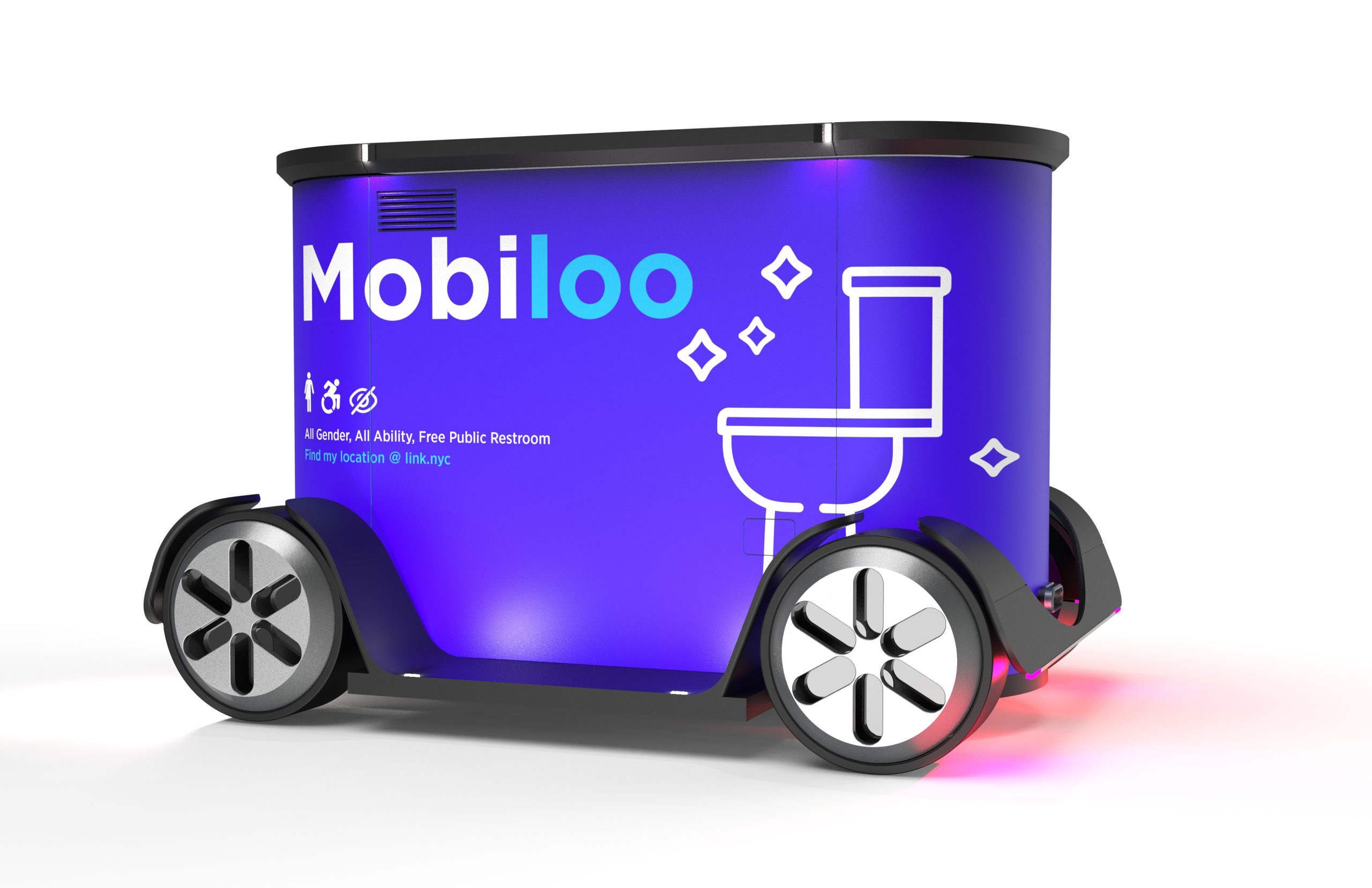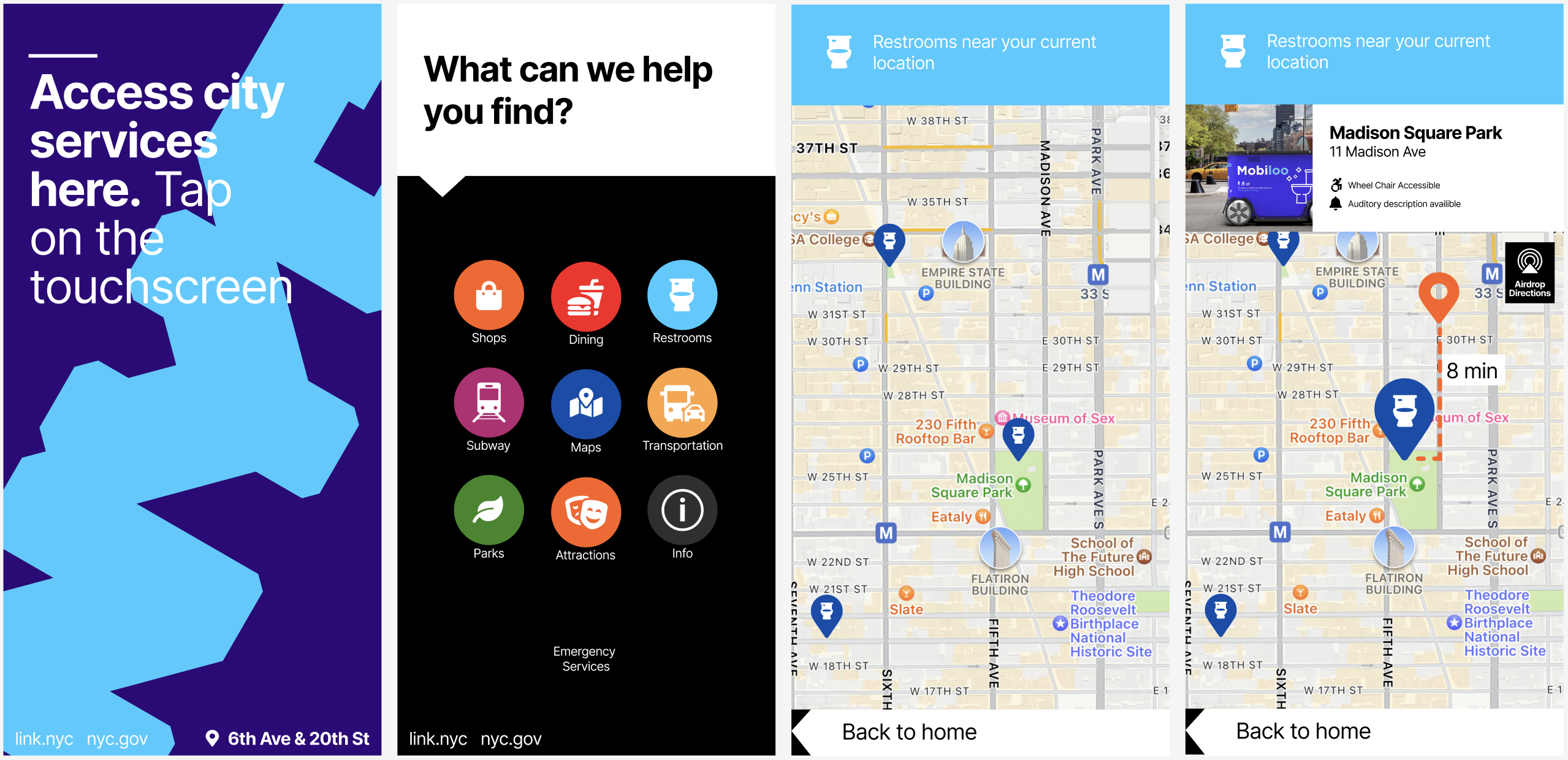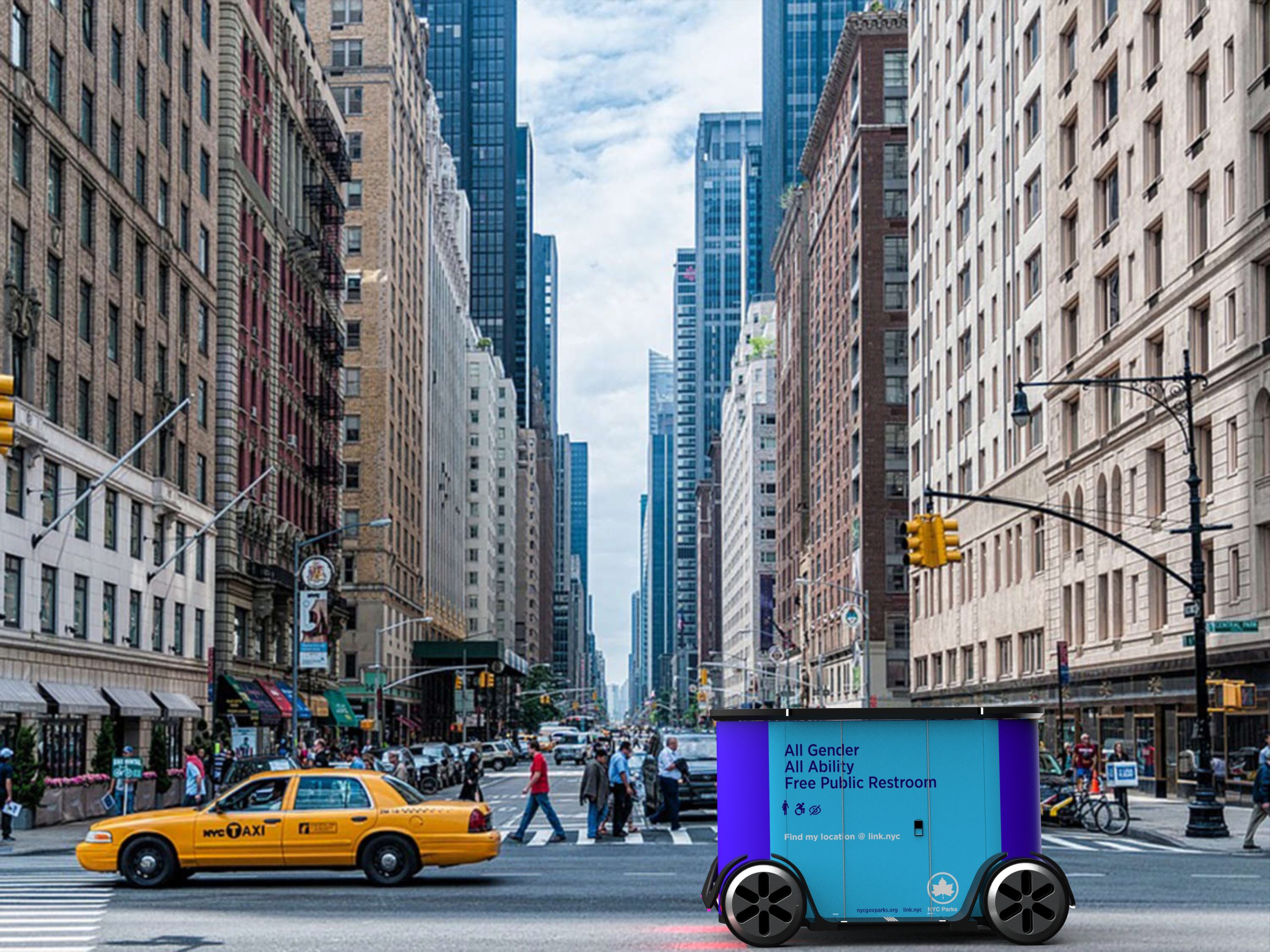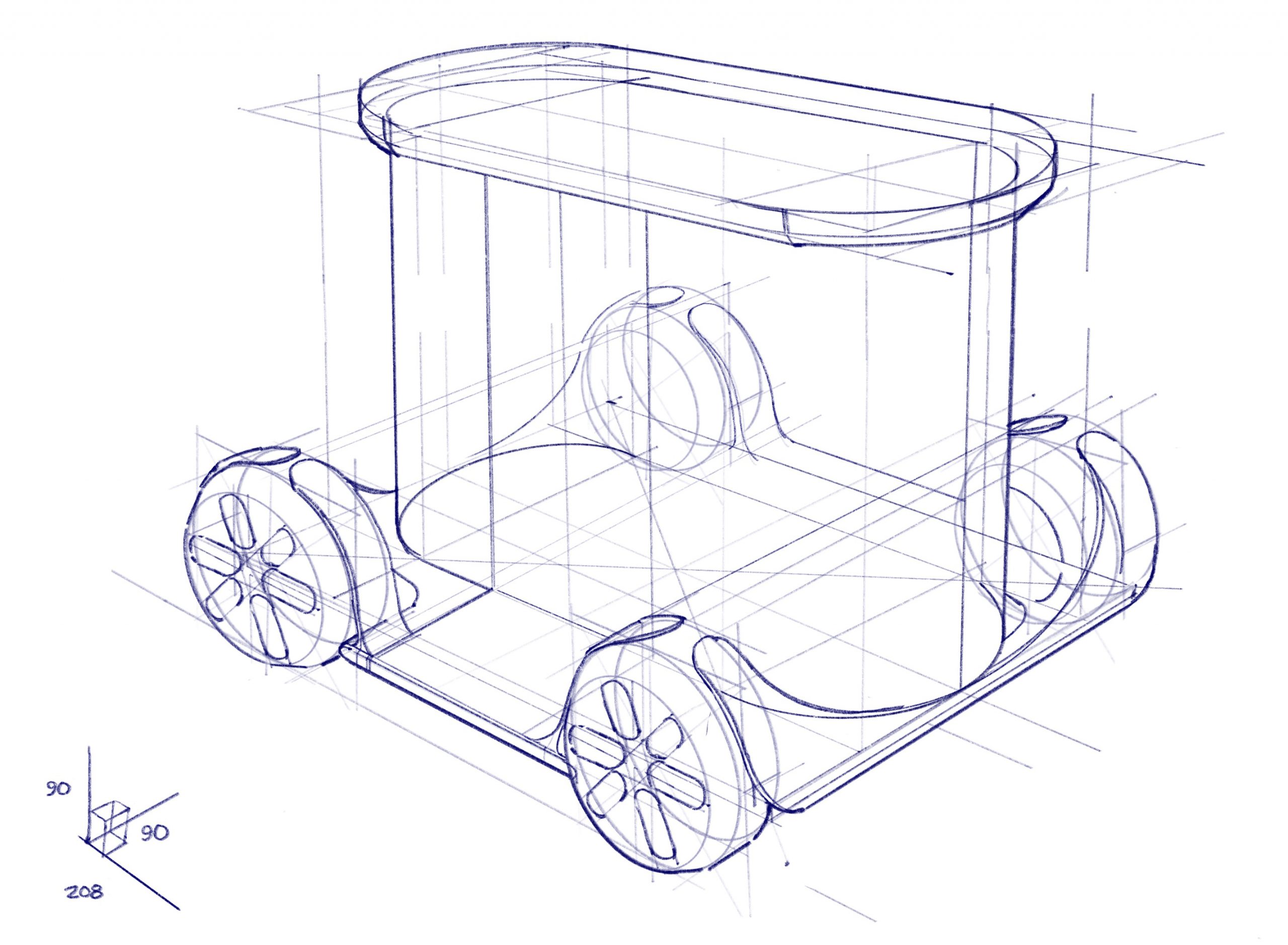Title: Public Restrooms for Urban Environments
Product Name: Mobiloo
Topic/Problem description:
This fall, I underwent the research process of collecting these stories to try to better understand the civic tech, public infrastructure, and design that currently supports public restrooms in urban environments. Additionally, I felt it necessary to uncover points of view that varied from my own experience to identify the pain points of users. Designing public spaces inherits its own set of challenges. Considerations of ability, race, ethnicity, sexual orientation, gender identity, religion/spirituality, nationality and socioeconomic status impact the experience for each individual. The goal becomes creating positive interactions for all types of users with all sorts of lived experiences. But when the restroom is at its most abstracted core, it is a universally shared human experience which we all deserve the dignity and safety to undergo.
This experience of trying to find a public restroom in New York City opened my eyes to the issue that there just aren’t enough public restrooms. My story is only one of many, little kids who “can’t hold it,” elderly people who can’t walk 10 blocks to the next public bathroom, trans people who are uncomfortable or scared to go into public restrooms, and on and on. In addition to lack of public restroom options, they are difficult to locate and are poorly designed. They are often poorly maintained, and don’t have a consistent user experience. This story focused on only one user that is served by public restrooms. The lack of accessible bathroom options, and shortcomings of the existing options in urban environments is something that affects all sorts of people, all with stories of their own.
Solution:
It was a priority to give users a sense that they weren’t in an automobile, rather a facility. Therefore, I wanted to subtract many of the car like features. The final concept car has a futuristic design language. It features a wide wheel base, and is very low to the ground. Using hydraulics it can lower itself to street level for wheel chair users, or pull up next to the curb where it will be level. It is autonomous and thus doesn’t appear to have a front or back, this bilateral symmetry in multiple axis adds to the feeling that this is a futuristic moving room rather than a traditional car.
Once I had my concept, it was time to flush out the details. These include dimensions, materials, layout, graphics, and internal and external features. Using a combination of 3d modeling, rendering, and graphics creation software I was able to actualize and visually represent my final design!
The user could locate any LinkNYC panel or open the mobile app to check the location of the nearest public or mobile restrooms. Once the waste tank is full, the fresh water has been used up, or the cabin requires cleaning, it simply drives itself back to the hub. It is also able to relocate itself based on demand. For example if there is an event at a particular location, it could station itself at that location.




